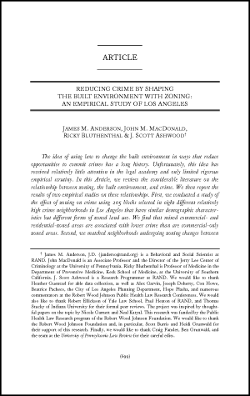
The idea of using law to change the built environment in ways that reduce opportunities to commit crimes has a long history. Unfortunately, this idea has received relatively little attention in the legal academy and only limited rigorous empirical scrutiny. In this Article, we review the considerable literature on the relationship between zoning, the built environment, and crime. We then report the results of two empirical studies on these relationships. First, we conducted a study of the effect of zoning on crime using 205 blocks selected in eight different relatively high crime neighborhoods in Los Angeles that have similar demographic characteristics but different forms of zoned land use. We find that mixed commercial- and residential-zoned areas are associated with lower crime than are commercial-only zoned areas. Second, we matched neighborhoods undergoing zoning changes between 2006 and 2010 with neighborhoods that underwent no zoning changes during this period but had similar preexisting crime trajectories between 1994 and 2005. The primary zoning change in these neighborhoods was to convert parcels to residential uses. We find that neighborhoods in which there was a zoning change experienced a significant decline in crime. Our results suggest that mixing residential-only zoning into commercial blocks may be a promising means of reducing crime.
